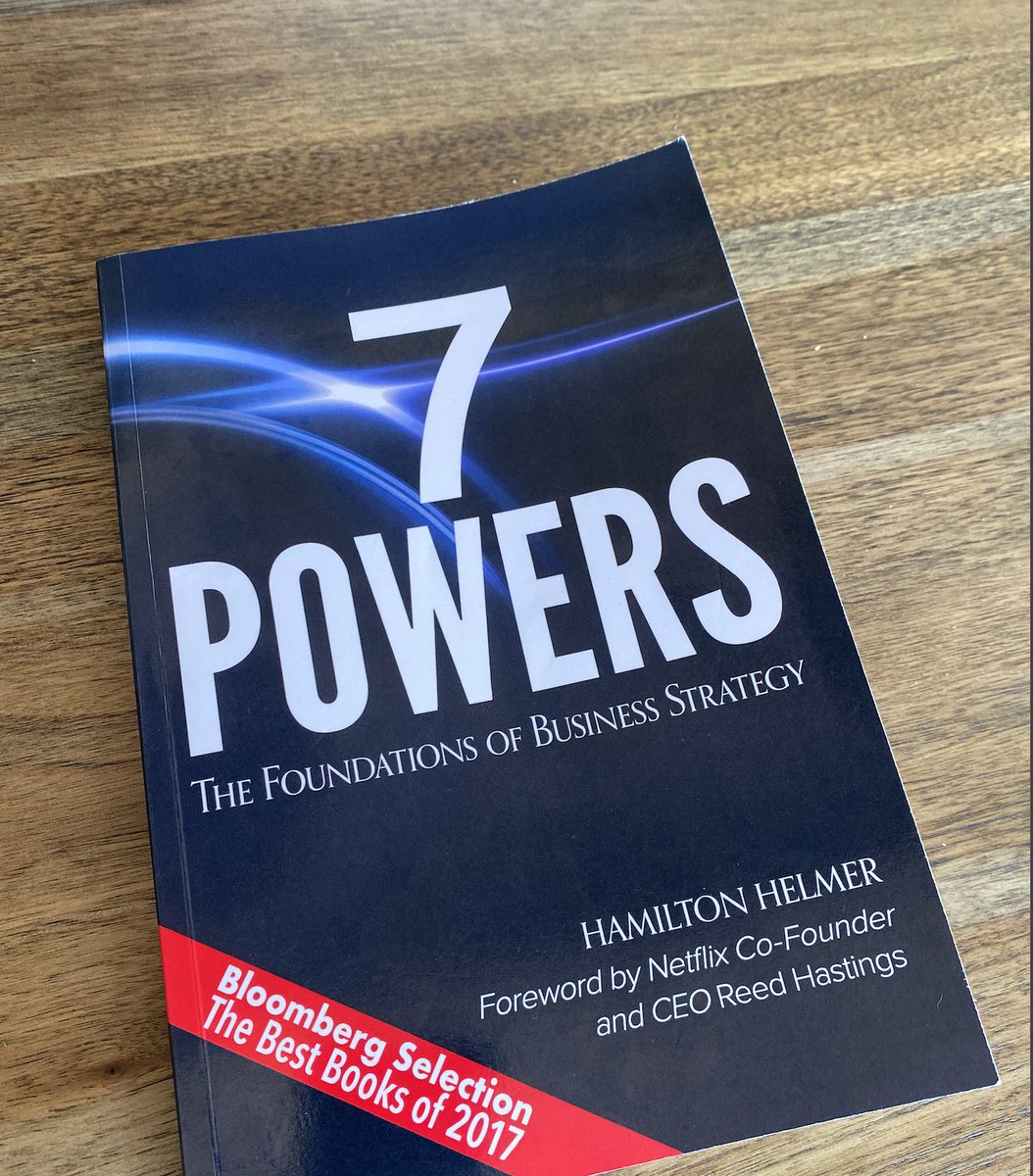Most strategy books are a waste of time, but 7 Powers by @hamiltonhelmer gave me a genuinely new mental model for thinking about how to build a moat.
Here is a brief summary of Helmer's concepts, and five common ways they are misunderstood by startups:
Here is a brief summary of Helmer's concepts, and five common ways they are misunderstood by startups:
Hamilton describes three stages of power development:
Origination - Pre product market fit
Takeoff - Explosive growth, typically >40% YOY
Stability - Continued growth, but not at "takeoff" levels
Origination - Pre product market fit
Takeoff - Explosive growth, typically >40% YOY
Stability - Continued growth, but not at "takeoff" levels
2 of the 7 powers are usually developed during Origination:
Cornered resources: access to a valuable resource at below market rates. (e.g. patents, an exceptional mgmt team)
Counter-positioning: a new business model that incumbents can't follow because it will reduce their TAM
Cornered resources: access to a valuable resource at below market rates. (e.g. patents, an exceptional mgmt team)
Counter-positioning: a new business model that incumbents can't follow because it will reduce their TAM
3 of the powers are usually developed during Takeoff:
Scale: unit economics improve as volume increases
Network economies: value to customers increases with each additional customer
Switching costs - customers incur a net value loss if they switch to a competitor
Scale: unit economics improve as volume increases
Network economies: value to customers increases with each additional customer
Switching costs - customers incur a net value loss if they switch to a competitor
2 of the powers are usually developed during Stability:
Branding - customers ascribe higher value to an identical product due to reputation earned over time
Process power - organizational structure and practices that are hard to replicate and lead to higher quality / lower cost
Branding - customers ascribe higher value to an identical product due to reputation earned over time
Process power - organizational structure and practices that are hard to replicate and lead to higher quality / lower cost
Here is a great summary with more detail and examples from @sachinrekhi https://www.sachinrekhi.com/7-powers-hamilton-helmer
These concepts are sometimes misunderstood by startups who think they are on the path toward a moat when they are in fact on the path toward getting their margins competed into the ground.
Here are five of the most common misconceptions I see:
Here are five of the most common misconceptions I see:
(1) Great execution does not usually lead to power, because it is replicable.
The key exception is during breakout growth stage, when execution can mean securing power (e.g. network effects or scale) before competitors do
See: Uber's relentless execution vs. Lyft and Sidecar
The key exception is during breakout growth stage, when execution can mean securing power (e.g. network effects or scale) before competitors do
See: Uber's relentless execution vs. Lyft and Sidecar
(2) A data advantage rarely leads to power.
Helmer said on the @patrick_oshag podcast: "I don't think I've ever seen an algorithm be defensible."
The @eugenewei piece on TikTok makes a compelling case for an exception to this rule https://www.eugenewei.com/blog/2020/8/3/tiktok-and-the-sorting-hat
Helmer said on the @patrick_oshag podcast: "I don't think I've ever seen an algorithm be defensible."
The @eugenewei piece on TikTok makes a compelling case for an exception to this rule https://www.eugenewei.com/blog/2020/8/3/tiktok-and-the-sorting-hat
(3) Many startups plan to increase switching costs later, but rarely can.
Customers are typically only willing to be locked in during a paradigm shift where one company is early to market, creating an amazing value prop
Salesforce did this many years ago and is still benefiting
Customers are typically only willing to be locked in during a paradigm shift where one company is early to market, creating an amazing value prop
Salesforce did this many years ago and is still benefiting
(4) Virality ≠ Network effects.
Virality can be a powerful customer acquisition channel, but it does not necessarily lead to a durable advantage.
More from @bmrothenberg - https://twitter.com/bmrothenberg/status/1141524317391511558
Virality can be a powerful customer acquisition channel, but it does not necessarily lead to a durable advantage.
More from @bmrothenberg - https://twitter.com/bmrothenberg/status/1141524317391511558
(5) Most companies <10 years old are kidding themselves if they think their power comes from Brand
It usually takes many years, creative genius, and consistent execution against a promise to build a defensible brand.
This is why many D2C companies see their margins eaten by CAC
It usually takes many years, creative genius, and consistent execution against a promise to build a defensible brand.
This is why many D2C companies see their margins eaten by CAC
I highly recommend reading the full book - it is hard to do it justice in this format.
Thank you to @rabois for the original recommendation https://twitter.com/rabois/status/985605692244475904
Thank you to @rabois for the original recommendation https://twitter.com/rabois/status/985605692244475904

 Read on Twitter
Read on Twitter


